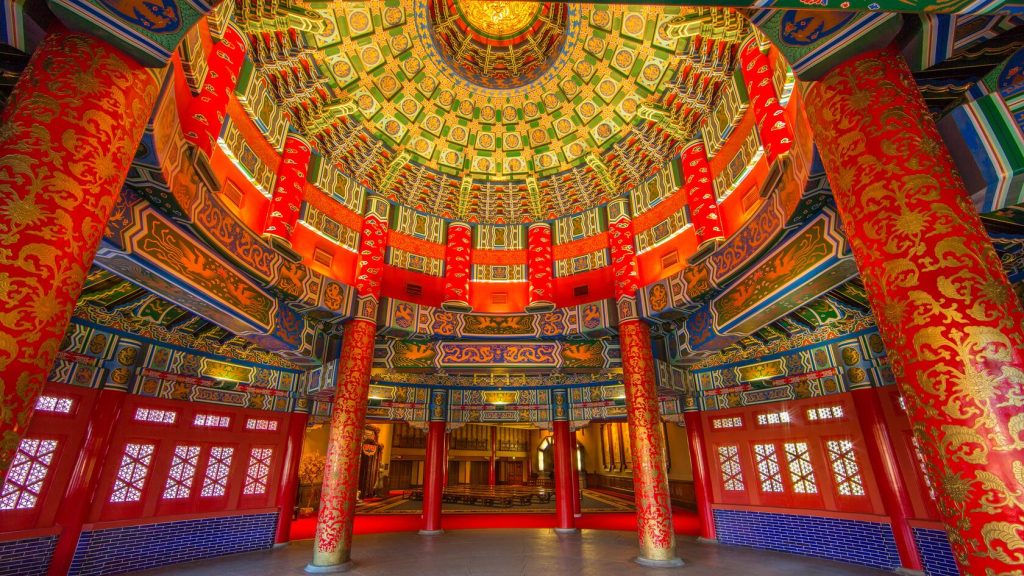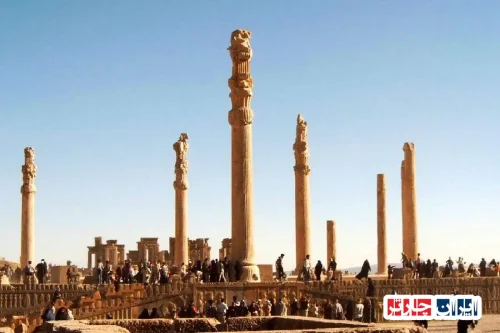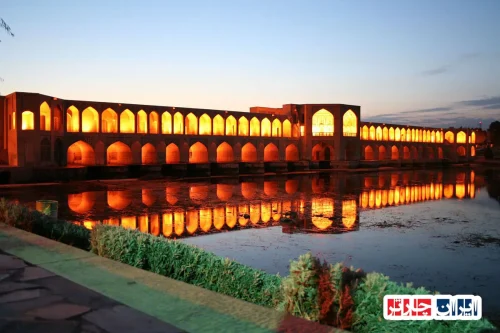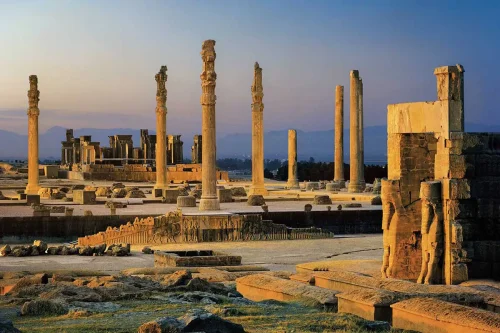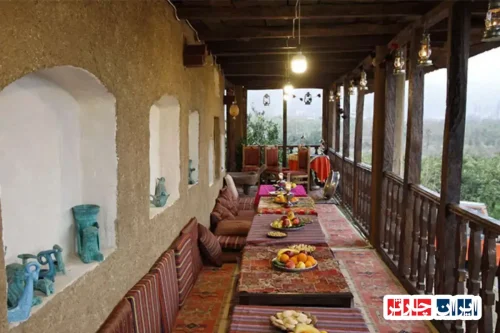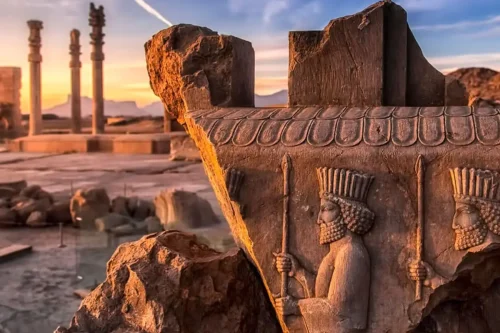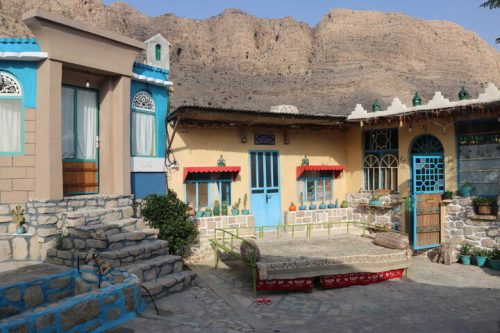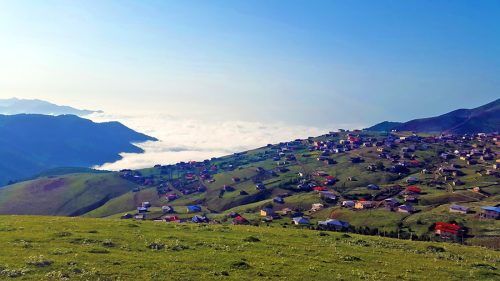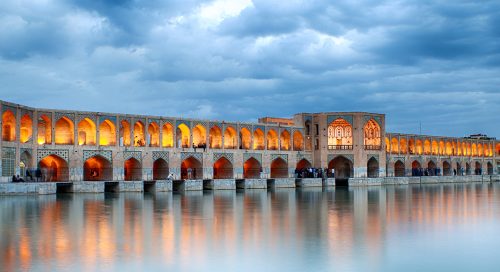News Source : https://www.irna.ir/news/85681469/%D8%B4%DA%A9%D9%88%D9%87-%D8%A7%DB%8C%D8%B1%D8%A7%D9%86-%D8%A8%D8%A7%D8%B3%D8%AA%D8%A7%D9%86-%D8%A8%D9%87-%D8%B3%DB%8C%D9%86-%DA%A9%DB%8C%D8%A7%D9%86%DA%AF-%DA%86%DB%8C%D9%86-%D8%B1%D8%B3%DB%8C%D8%AF
The Glory of Ancient Iran Reaches Xinjiang, China
The cultural exhibition ‘The Glory of Ancient Iran’ received a warm welcome from audiences and enthusiasts of Iranian history and art, as it arrived for its third public showcase in Xinjiang Province, China. Organized by the National Museum of Iran, the exhibition offers a unique space for displaying historical and recreated artifacts with a heritage spanning over three thousand years. This grand event showcases more than 211 historical items and 5 recreated pieces representing different periods of Iranian civilization, from antiquity to the Safavid era.
Ali Darabi, Deputy Minister and the Head of Cultural Heritage of our country, attended the opening ceremony of the ‘Glory of Ancient Iran’ exhibition, stating that the exhibition symbolizes the deep cultural and historical relations between Iran and China. He added: ‘The Glory of Ancient Iran’ Reaches Xinjiang, China, indicating the continued and expanding cultural cooperation between the two nations.
Jebril Nokandeh, Director General of the National Museum of Iran, announced that after years of successful experience in Beijing and Shanghai, the exhibition now reaches Xinjiang Province to introduce Iranian culture, art, and civilization to new audiences from all over China. He added: ‘The Glory of Ancient Iran’ Reaches Xinjiang, China, hoping that this event will enhance friendly and strategic relations between countries.
The exhibition is held at the Xinjiang Uyghur Autonomous Region Museum, one of China’s largest museums, housing over 40,000 objects. The honorary presence of Iranian managerial personnel at this event underscores the importance of this exhibition and Iran’s prominent position on the international cultural stage. The ‘Glory of Ancient Iran’ exhibition will continue in Xinjiang until the end of March 2025, and is expected to attract many visitors.
The Significance of the “Splendor of Ancient Iran” Exhibition in Xinjiang
The cultural exhibition “Splendor of Ancient Iran,” which has reached Xinjiang, China’s largest province, plays a significant role in enhancing cultural relations between Iran and China. This event, attended by prominent cultural and heritage figures from both countries, provides an excellent opportunity to introduce Iran’s rich history and art to the Chinese community. The exhibition showcases 211 historical artifacts and 5 recreated pieces, representing various periods of Iranian civilization from ancient times to the Safavid period, attracting the attention of history and culture enthusiasts.
Iran’s Honored Presence in a Xinjiang Museum
The honorary presence of Iranian representatives at the opening ceremony of the “Splendor of Ancient Iran” exhibition at the Xinjiang Uygur Autonomous Region Museum signifies the importance of this event for both nations. Ali Darabi, Deputy Minister and Cultural Heritage Deputy, emphasized the cultural achievements of Iran presented at the exhibition and the added value that this cultural collaboration created. This presence symbolizes the friendship and mutual respect between the two countries in cultural and historical fields.
Historical and Recreated Artifacts at the Xinjiang Exhibition
The “Splendor of Ancient Iran” exhibition displays over 211 historical artifacts and 5 recreated pieces, showcasing Iran’s cultural treasures. These items include historical objects dating back over three thousand years, each narrating a story from Iran’s past. Additionally, the recreated pieces are crafted with precision and artistry to highlight the beauty and details of various historical periods in Iran.
Impact of “Splendor of Ancient Iran” on Iran-China Cultural Relations
The “Splendor of Ancient Iran” exhibition in Xinjiang serves as a powerful bridge for expanding cultural cooperation between Iran and China. This exhibition not only provides an opportunity to introduce Iranian culture and art to the Chinese community but also facilitates further cultural and artistic exchange between the two nations. This cooperation is a testament to both countries’ commitment to preserving and promoting their cultural heritage and enhancing international friendly relations.
Special Programs of the Iranian Exhibition in Xinjiang
The “Splendor of Ancient Iran” exhibition in Xinjiang features special programs inviting visitors to experience more than just the historical artifacts. Among these programs are educational workshops, specialized lectures on ancient Iranian history, and interactive exhibitions. These programs are designed to increase visitor engagement with the exhibition’s content and enhance their knowledge of Iranian culture and history.
Organizers and Collaborators of the Iranian Exhibition in China
The cultural exhibition “Splendor of Ancient Iran” is organized by the National Museum of Iran, with various cultural and artistic organizations in Iran and China providing support. Close cooperation among these organizations ensures that the exhibition is held to the highest quality and international standards. Financial and logistical support from the Ministry of Cultural Heritage and other related organizations further enables the extensive and impactful presence of Iranian artifacts in China.
Audience Reaction to the “Splendor of Ancient Iran” Exhibition in Xinjiang
The “Splendor of Ancient Iran” exhibition has been warmly received by audiences and enthusiasts of Iranian history and art in Xinjiang. Visitors from across China have shown great interest and admiration in viewing the historical and recreated artifacts of Iran. Positive feedback from the audience indicates the exhibition’s success in attracting attention and creating a positive impact on Iranian culture and art in the Chinese community.
Selected Artifacts at the “Splendor of Ancient Iran” Exhibition in Xinjiang
The “Splendor of Ancient Iran” exhibition features a collection of unique cultural and historical artifacts from Iran, each representing a significant period in Iranian history. These artifacts include examples of decorative arts, sculpture, and handicrafts, carefully preserved and displayed with high skill. Each piece tells a story of Iran’s rich ancient civilization, providing visitors with a unique opportunity to gain a deeper understanding of the country’s history and culture.
The Future of Iran-China Cultural Cooperation in Xinjiang
The successful hosting of the “Splendor of Ancient Iran” exhibition in Xinjiang has paved the way for a greater commitment by both countries to develop their cultural cooperation. Given the broad reception and positive outcomes of this exhibition, it is expected that Iran-Xinjiang cultural collaborations will continue in newer and extensive forms in the near future. These collaborations may include hosting similar exhibitions in other provinces of China, exchanging artists and scholars, and developing joint cultural and artistic projects.
FAQs
- Where has the “Splendor of Ancient Iran” exhibition moved to?
- The “Splendor of Ancient Iran” exhibition has moved to its third public exhibition in Xinjiang, China’s largest province.
- How many historical artifacts does the “Splendor of Ancient Iran” exhibition include?
- The exhibition includes 211 historical artifacts and 5 recreated art and civilization pieces of Iran.
- When is the exhibition available for viewing in Xinjiang?
- The exhibition is on display at the Xinjiang Museum from December 6, 2024, to March 6, 2025.
- Where was the “Splendor of Ancient Iran” exhibition displayed before Xinjiang?
- Prior to Xinjiang, the exhibition was displayed for three months at the Palace Museum in Beijing and for four months at the Shanghai Museum.
- Which Iranian officials attended the exhibition’s opening?
- Ali Darabi, the Deputy Minister and Cultural Heritage Deputy of Iran, attended the exhibition opening.
- What periods does the “Splendor of Ancient Iran” exhibition cover?
- The exhibition covers periods from about three thousand years ago up to the Safavid era.
- How many items does the Xinjiang Museum collection hold?
- The Xinjiang Museum holds more than 40,000 historical objects in its collection.
- What are Iran and China’s cultural relations based on?
- Iran and China’s cultural relations are based on peace, friendship, and the Silk Road.
- What did the Director of the National Museum of Iran say about the exhibition?
- Director Jebreil Nokandeh said the exhibition narrates 211 historical artifacts and 5 recreated pieces from as far back as three thousand years ago to the Safavid era.
- How does the “Splendor of Ancient Iran” exhibition demonstrate continued Iran-China cooperation?
- The exhibition’s presence after Beijing and Shanghai illustrates the continuation and expansion of cultural cooperation between the two nations.
- What did “Jin Zhu,” Director of Cultural Heritage of Xinjiang Province, say about the exhibition?
- Mr. Zhu said the exhibition is an honor and considers Iran one of its best friends, with deep cultural relations with Iran.
- How did the people of Ürümqi feel about the exhibition?
- The people of Ürümqi have long been waiting for the “Splendor of Ancient Iran” exhibition.
- How does the Silk Road reflect Iran-China relations?
- The Silk Road has historically reflected peace and friendship between Iran and China.
- How does the “Splendor of Ancient Iran” exhibition help introduce Iran in Western China?
- This exhibition at the Xinjiang Museum introduces Western China to Iran’s culture, art, and civilization.
- What is the total number of artifacts held at the Xinjiang Museum?
- The Xinjiang Museum holds over 40,000 artifacts.

